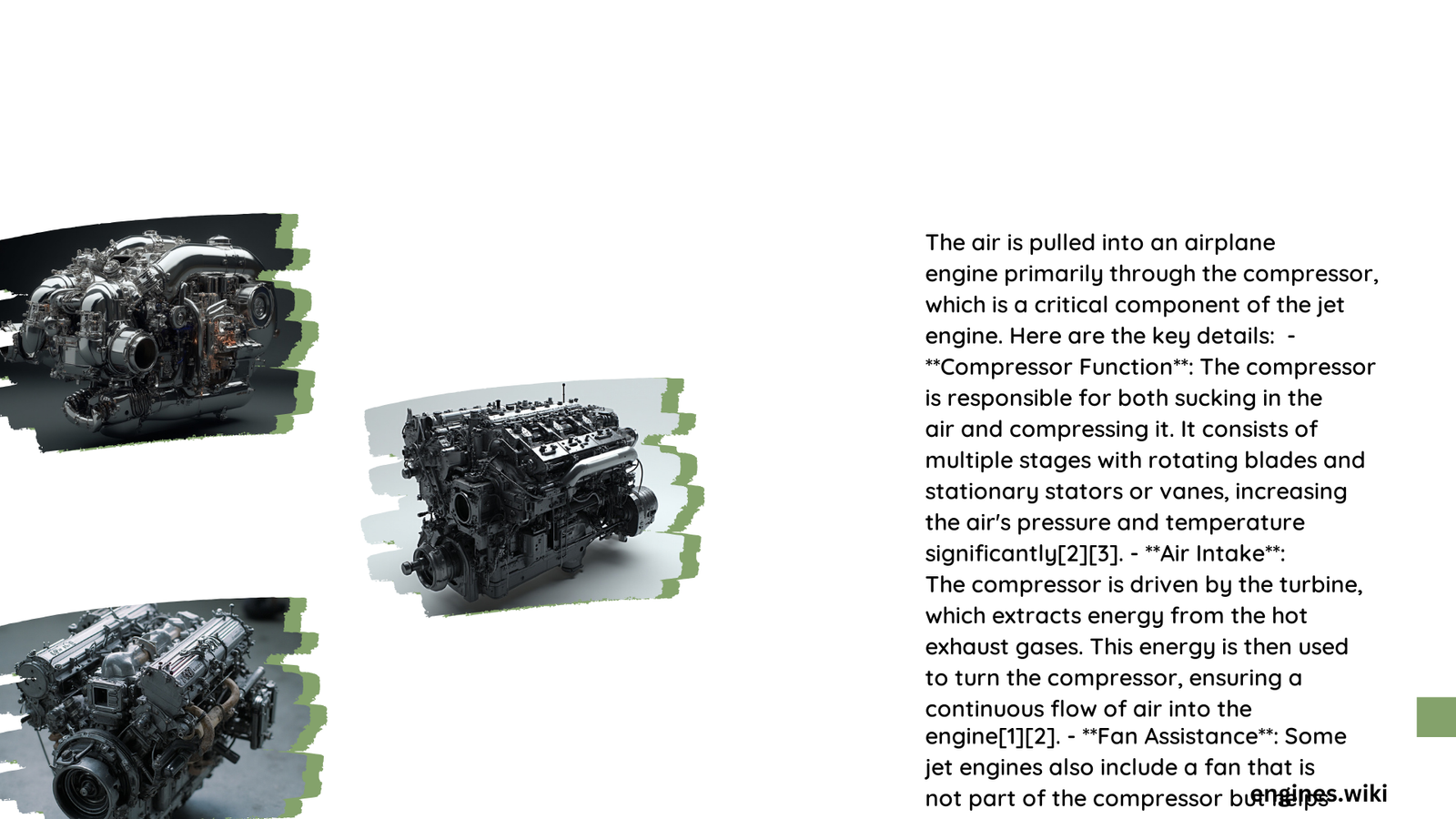Aircraft air intake systems represent a sophisticated engineering marvel that strategically captures and channels atmospheric air into engine compressors. These complex mechanisms utilize advanced aerodynamic principles to efficiently pull air through precise geometric configurations, transforming kinetic energy into potential energy while maintaining optimal flow characteristics across various flight conditions.
What Determines Air Capture in Aircraft Engines?
How Do Ram Air Effects Influence Air Intake?
Ram air effects play a critical role in pulling air into airplane engines through several key mechanisms:
- Kinetic Energy Conversion: Transforms high-velocity external airflow into pressurized potential energy
- Dynamic Pressure Generation: Creates additional air pressure through aircraft forward motion
- Speed-Dependent Performance: Increases air capture efficiency with increasing aircraft velocity
What Mechanical Components Pull Air?
Multiple mechanical components collaborate to pull air into airplane engines:
- Inlet Geometry
- Divergent duct designs
- Carefully engineered contours
-
Smooth internal surfaces
-
Compressor Dynamics
- Rotational blade configurations
- Suction-based air movement
- Pressure differential generation
What Are the Primary Air Intake Design Strategies?
Subsonic Intake Approaches
- Uniform Flow Management: Ensures consistent airflow distribution
- Pressure Recovery Optimization: Maximizes total pressure at compressor entry
- Minimal Flow Distortion: Reduces turbulence and energy losses
Supersonic Intake Technologies
- Variable Geometry Mechanisms
- Shock Wave Management
- Adaptive Inlet Configurations
How Do Different Aircraft Types Manage Air Intake?
| Aircraft Type | Air Intake Characteristic | Performance Metric |
|---|---|---|
| Commercial Jets | Fixed Geometry | High Pressure Recovery |
| Stealth Aircraft | Serpentine Ducts | Reduced Radar Signature |
| Supersonic Planes | Variable Ramp Intakes | Adaptive Flow Management |
| Hypersonic Vehicles | Integrated Inlet Designs | Extreme Temperature Resistance |
What Technical Challenges Exist in Air Intake Design?
Critical challenges include:
– Managing flow uniformity
– Minimizing boundary layer disruptions
– Maintaining pressure recovery across diverse flight conditions
– Balancing aerodynamic efficiency with structural constraints
What Advanced Technologies Enhance Air Capture?
Emerging technologies focus on:
– Adaptive inlet geometries
– Advanced computational fluid dynamics modeling
– Materials with enhanced thermal and aerodynamic properties
– Active flow control mechanisms
Conclusion

Air intake systems represent a pinnacle of aerospace engineering, combining complex aerodynamic principles with precision mechanical design to efficiently pull air into airplane engines across diverse operational environments.
